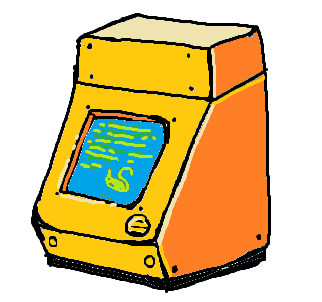Super Wide Access Network
Welcome to Solaris, traveller! This is a slower-than-light science fantasy set in our own solar system.
About Solaris | Guide to Solaris | Prologue
About Solaris | Guide to Solaris | Prologue
The Super Wide Access Network, or SWAN, is a lacework that aims to be reliable and highly available throughout the entire system. As a downside of these goals, however, it cannot handle large amounts of data. While the modern SWAN protocol technically supports images, to this day most SWAN terminals can only recieve text and it is considered impolite to upload large images.
As the only interlace network available outside of orbit, SWAN is the network of choice for disseminating spaceport announcements. SWAN is also popular on spacecrafts. It allows travellers to receive news and communicate with friends and family even on long journeys far from population centers. While many news organizations no longer publish directly to SWAN, countless individuals have taken it upon themselves to copy articles they find interesting or important to SWAN.
SWAN consists of independently operated servers, or nodes, that maintain a list of topics local terminals subscribe to. Users are notified when a topic they are subscribed to receives new messages. Whenever a new message is posted to a SWAN node, it forwards the message to other nodes it is in contact with. Some SWAN nodes are colocated with satellites that have long range transceiver dishes to allow them to pass messages to far away nodes. When a node receives a message, it stores it if one of its users has subscribed to that topic before forwarding it to nodes that it, in turn, has connections with. In this method, messages will eventually spread throughout the entire Sol System.
SWAN's architecture inherits the downsides of both centralized and fully distributed networks. SWAN's reliance on a small number of long range transceivers to form the backbone of its network can cause bandwidth problems as messages are funneled into those few connections. On the other hand, each node is independently operated, meaning it is difficult to enforce service standards across the network. A given node might have poor connectivity or limited hardware, causing poor user experience and possibly even missed messages if your terminal happens to connect to that node.
| Crystal Technology | ||||||||
|---|---|---|---|---|---|---|---|---|
|
| Outer Space | ||||||||||
|---|---|---|---|---|---|---|---|---|---|---|
|






Comments